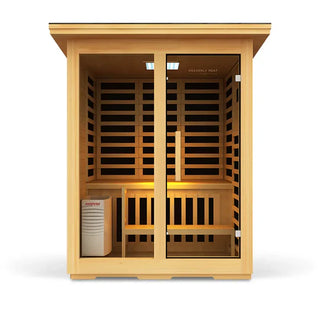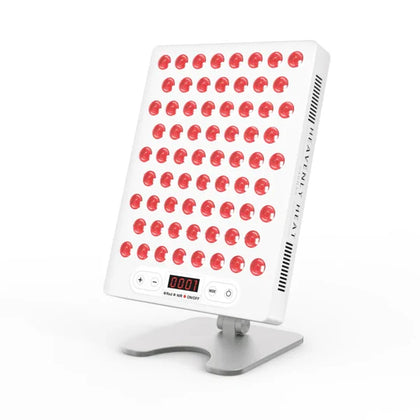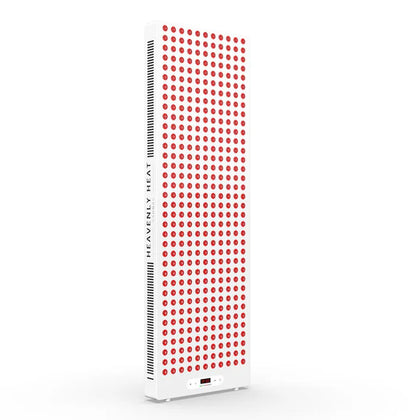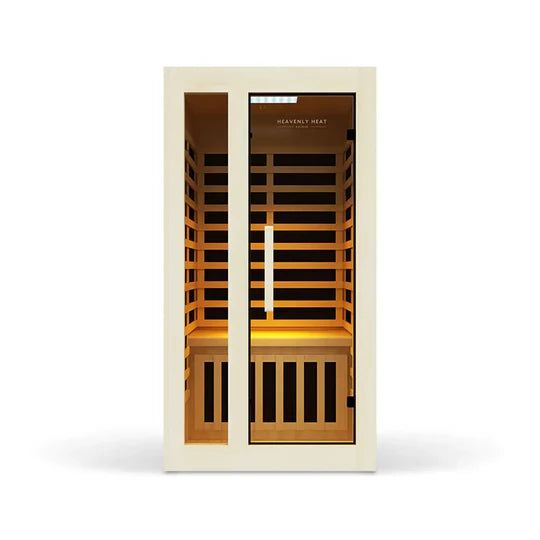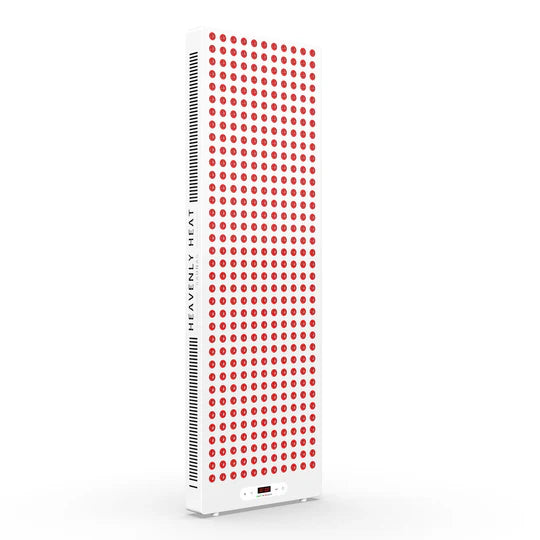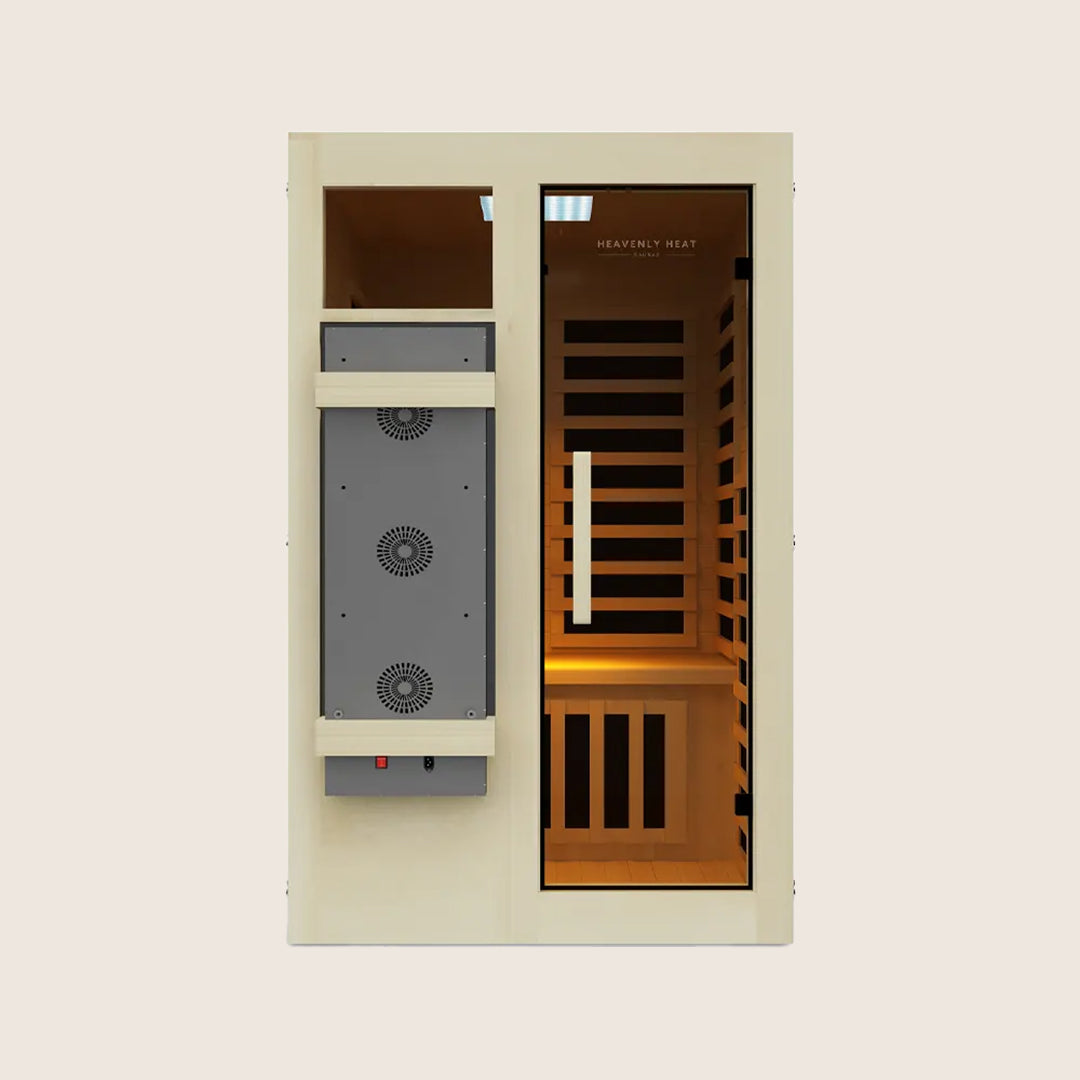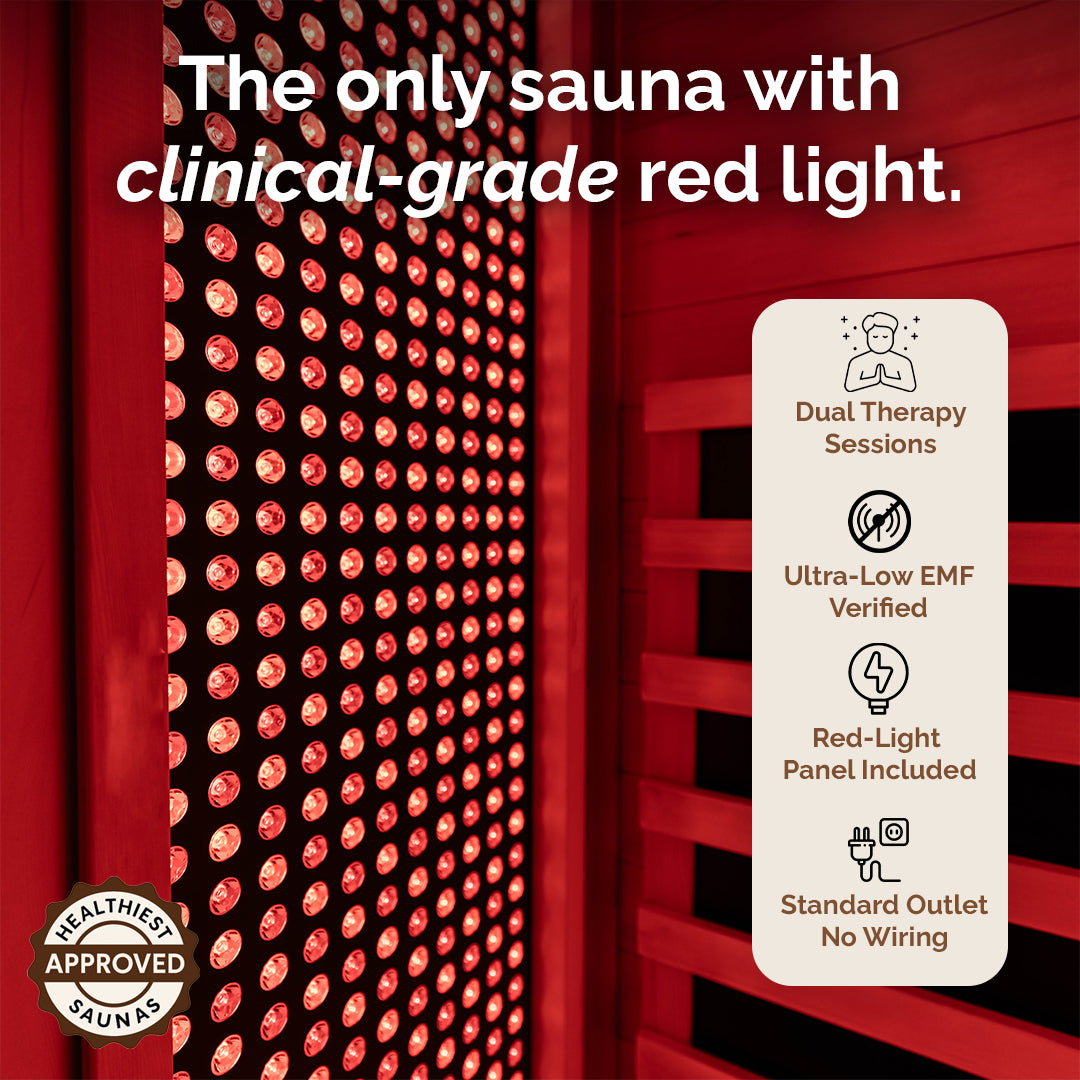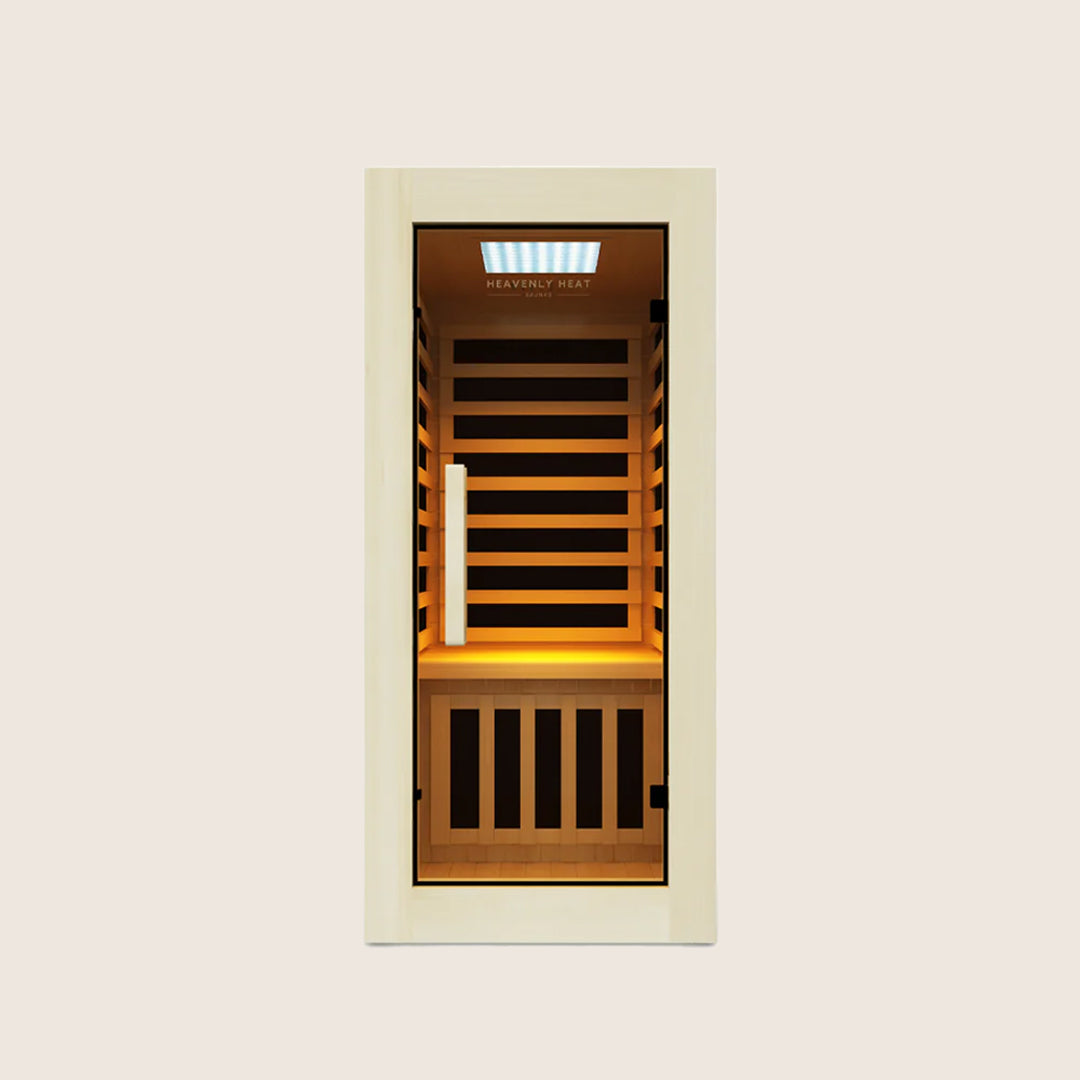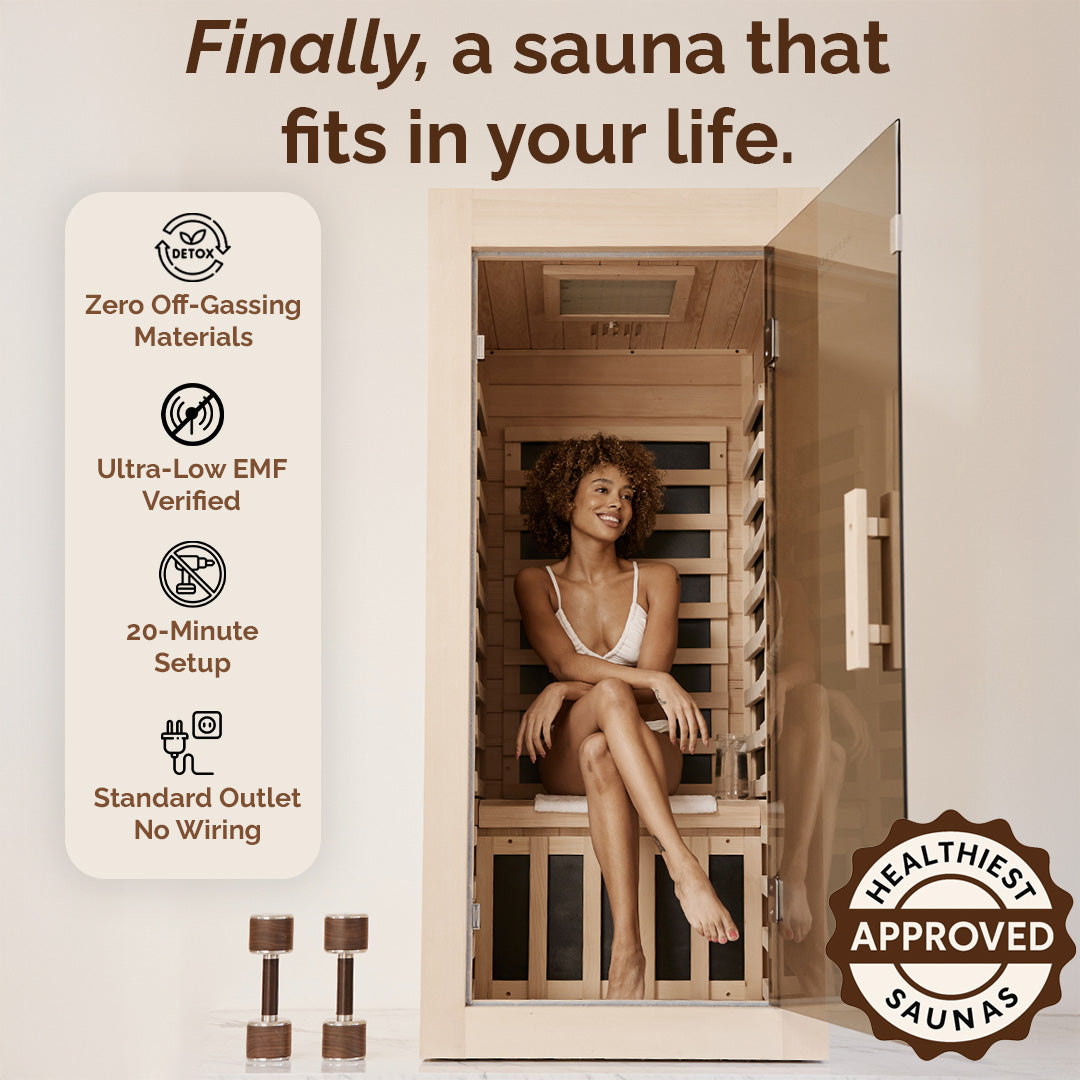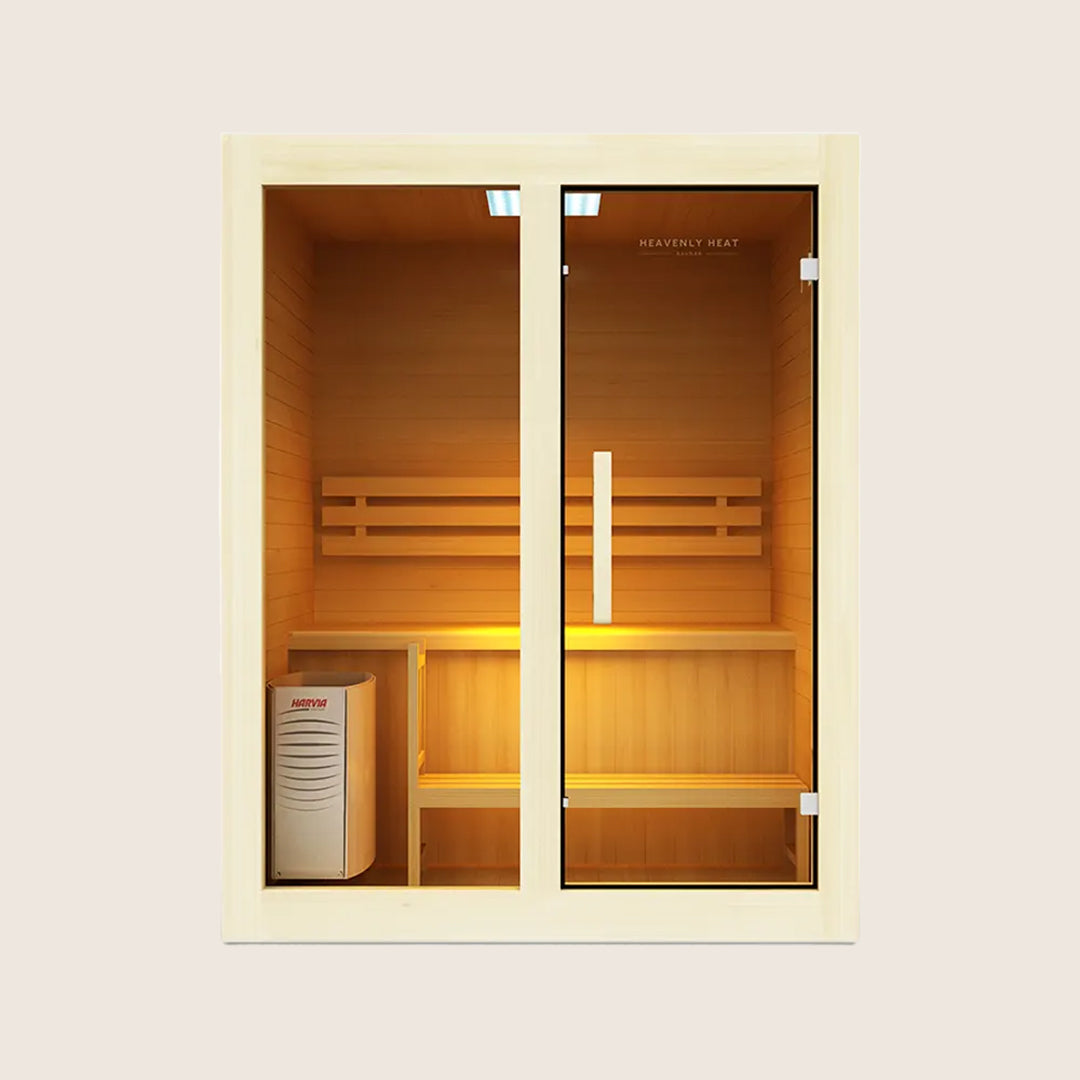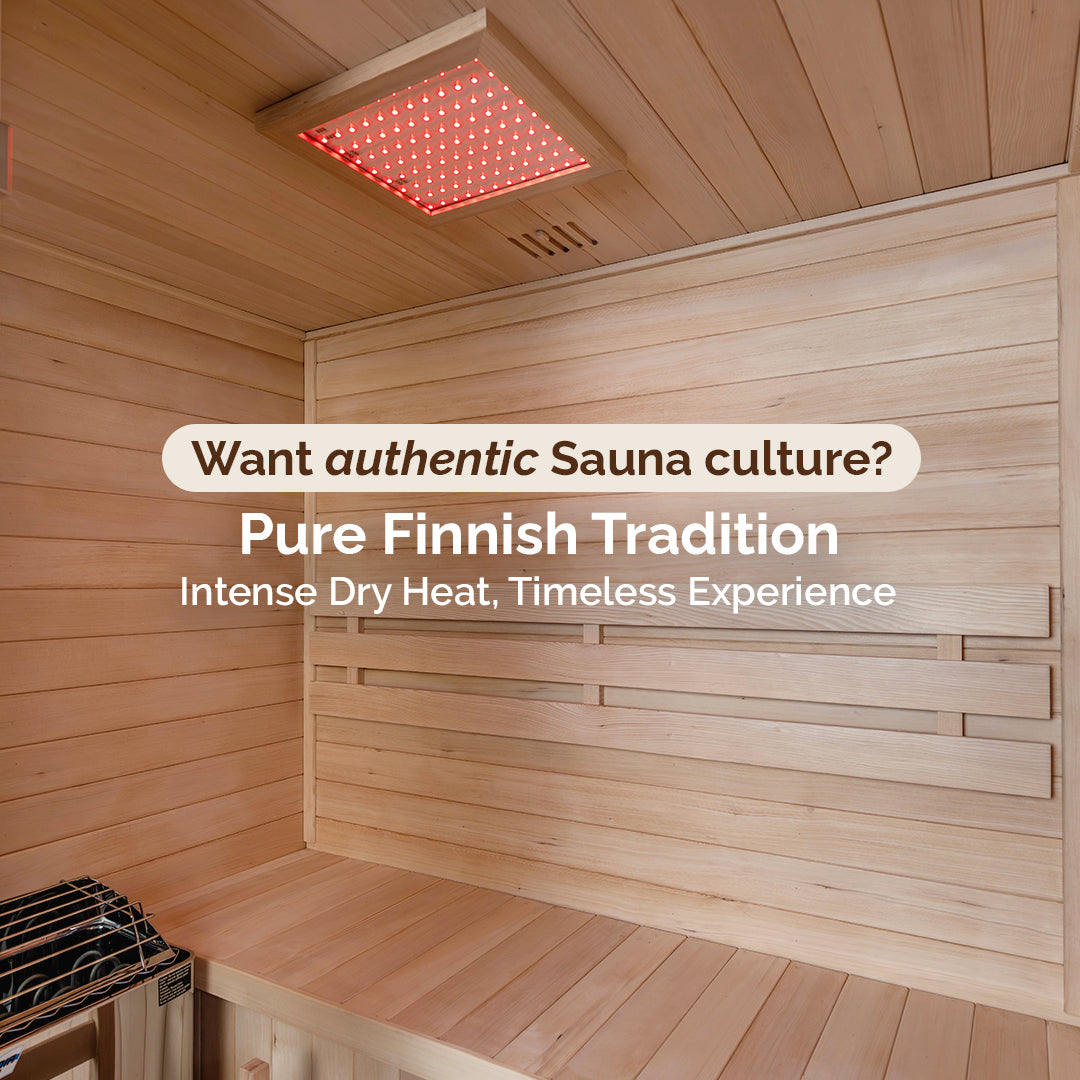Does Red Light Therapy Help With Hyperpigmentation?

Table of contents
Hyperpigmentation, those stubborn dark spots that refuse to fade, can shake your confidence and make skincare feel like an endless battle.
Sun exposure, hormonal shifts, and inflammation only worsen the problem, leaving many searching for a lasting solution. Ignoring it? That just leads to deeper, more persistent discoloration.
Key Takeaways
-
Red light therapy boosts collagen production, aiding in the fading of hyperpigmentation.
-
It reduces inflammation, helping to minimize dark spots caused by skin irritation.
-
Regular use of red light therapy can promote even skin tone and improve skin texture.
-
Red light therapy is safe, non-invasive, and suitable for all skin types.
-
Consistency and patience are key for seeing gradual improvements with red light therapy.
What is Hyperpigmentation?
According to Medical News Today, hyperpigmentation is a common skin condition where certain areas of the skin become darker than the surrounding skin due to excess melanin production. This discoloration can affect people of all skin tones but is particularly prevalent in those with darker skin. Hyperpigmentation is usually harmless but can be distressing for some individuals.
Common causes include:
Sun exposure : UV rays stimulate melanin production, leading to sun spots.
Skin inflammation : Conditions like acne, eczema, or trauma can trigger post-inflammatory hyperpigmentation.
Hormonal changes : Pregnancy or birth control pills may cause melasma, often seen as symmetrical patches on the face.
Medications : Certain drugs, including some antibiotics and chemotherapy agents, may lead to pigmentation changes.
Underlying medical conditions : Disorders like Addison’s disease or hemochromatosis can cause skin darkening.
While hyperpigmentation doesn't typically impact physical health, it can affect self-esteem and confidence, influencing daily interactions and mental well-being. Fortunately, treatments exist, from topical agents like vitamin C and retinoids to in-office procedures like chemical peels or laser therapy. For those seeking a gentler approach, natural remedies such as aloe vera or licorice extract may offer gradual improvement. With consistent care and sun protection, many people see visible results over time, making this manageable condition one of hope, not frustration.
Benefits of Red Light Therapy for Hyperpigmentation
Stimulates Collagen Production
When your skin makes more collagen, it gets stronger, smoother, and healthier, this helps fade dark spots by speeding up how fast your skin renews itself.
Red light therapy boosts collagen, which can even out your skin tone and reduce patches of discoloration.
In one study , people who used red LED light twice a week for three months saw clearer, firmer, and more even skin.
Another study with over 100 people found that red light increased collagen and made skin look brighter and smoother. These results show how red light can help improve hyperpigmentation naturally.
Reduces Inflammation
One big benefit of red light therapy for hyperpigmentation is that it helps calm inflammation. When your skin gets irritated or injured, it often responds with inflammation, and that can lead to dark spots or make existing ones worse.
Red light therapy steps in by soothing the skin and helping it heal without overreacting. One study showed that red LED light reduced swelling and stopped inflammatory cells from rushing to the area.
Another study found that it lowers stress in cells and helps them work better. By calming inflammation, red light therapy gives your skin a better chance to heal evenly.
Improves Blood Circulation
Better blood flow means your skin gets more oxygen and nutrients, two things it needs to heal and renew itself.
When your circulation improves, your skin can clear out toxins faster and replace damaged cells more easily, which helps fade dark spots over time.
Red light therapy boosts blood flow by helping your blood vessels open up and relax. A 2021 study in the Journal of Photochemistry and Photobiology B: Biology found that red light at 670 nm triggers your blood vessels to release special healing compounds called RSNOs.
These help your vessels widen and move blood more smoothly, giving your skin what it needs to fight hyperpigmentation.
Enhances Skin Regeneration
Red light therapy helps fade hyperpigmentation by speeding up how your skin heals and renews itself.
When red light reaches your skin, it gives your cells more energy, which helps them repair damage faster and grow fresh, healthy skin.
This quicker turnover makes dark spots fade over time. In one study, women used a red LED mask twice a week for three months and saw smoother skin and a more even tone.
Another study on wound healing showed that red light reduced inflammation and helped skin heal faster, both key for clearing up stubborn dark patches.
Increases Skin Elasticity
When your skin gets more elastic, it bounces back better, holds moisture longer, and heals faster, and that’s a big help for hyperpigmentation.
Strong, stretchy skin means better cell turnover and a smoother surface, which helps dark spots fade over time.
In one study with 136 people, red light therapy boosted collagen and made skin look and feel better.
Another study using a red LED mask twice a week for three months showed firmer, more even skin. These changes help your skin repair itself, making it easier to fade stubborn discoloration.
Safe and Non-Invasive
Red light therapy is a safe, non-invasive treatment for hyperpigmentation. Unlike chemical peels or lasers, it doesn’t require any cuts or injections.
The therapy is gentle and can be used at home, offering a convenient, pain-free solution without any recovery time.
Promotes Even Skin Tone
Red light therapy helps break down excess melanin, fading discoloration over time. It enhances blood circulation and collagen production, improving skin texture and making it look smoother and more radiant. This process helps balance skin tone and reduces uneven pigmentation like age spots.
Red Light Therapy vs. Traditional Hyperpigmentation Treatments
Mechanism of Action
Red light therapy works by penetrating the skin at a cellular level, boosting mitochondria activity to encourage cell repair and regeneration.
This process accelerates the turnover of damaged skin cells and fades hyperpigmentation. Unlike traditional treatments like chemical peels, which exfoliate, or laser therapy, which breaks down melanin with heat, red light therapy promotes healing without inflammation.
Treatment Process
- Red light therapy works without pain or discomfort: Red light therapy is a painless and non-invasive process. Each session takes just 10–20 minutes and doesn’t cause any discomfort or skin irritation during or after the treatment.
- You can do red light therapy at home or in a clinic: This treatment fits easily into your lifestyle. You can use LED devices at home or visit a clinic for professional sessions, depending on what suits you best.
- Chemical peels and laser treatments can be harsh on the skin: Unlike red light, traditional treatments like chemical peels often cause peeling and redness. Laser treatments use strong light to break down pigmentation and usually require recovery time.
- Red light therapy doesn’t damage your skin, even with regular use: There’s no risk of hurting your skin if you use red light therapy often. It’s gentle enough for regular use without side effects or long-term damage.
- You can keep using red light therapy even after your skin clears up: Once your pigmentation fades, you can continue using red light safely. For best results, dermatologists suggest using it 2–3 times a week for 20–30 minutes with medical-grade equipment.
Side Effects and Risks
Red light therapy is generally safe, with minimal side effects such as mild redness or temporary skin sensitivity.
Unlike chemical peels, which can cause burning or peeling, and laser treatments, which may cause scarring, red light therapy does not damage the skin barrier or increase infection risk.
However, if overused or exposed to for extended periods beyond the recommended guidelines, it may lead to skin irritation, burns, or eye discomfort.
Effectiveness
Red light therapy gradually fades hyperpigmentation by promoting skin repair, making it a safer choice for sensitive skin.
While it takes longer than chemical peels or laser resurfacing, the lack of downtime makes it appealing.
Traditional treatments offer quicker results but may not suit all skin types. Each year, millions search for hyperpigmentation treatments, with the market expected to grow from $5.1 billion in 2022 to $10.5 billion by 2032, reflecting rising demand and awareness.
Cost
Red light therapy is often more affordable than traditional treatments. Professional sessions typically cost a fraction of what you’d pay for laser treatments, and at-home devices are generally budget-friendly compared to options like chemical peels.
In contrast, procedures such as laser treatments can be significantly more expensive per session.
Convenience
Red light therapy is convenient, requiring no recovery time, and sessions last only 10–20 minutes.
Unlike chemical peels or laser treatments, which require clinic visits and downtime, red light therapy can be done at home. It easily integrates into a skincare routine , making it ideal for those with busy lifestyles.
Suitability for All Skin Types
- Red light therapy works safely on all skin types: Red light therapy doesn’t harm sensitive or dark skin. It’s designed to treat hyperpigmentation without triggering irritation or darkening the skin, which some traditional treatments can cause.
- Darker skin tones don’t have to worry about side effects: People with darker skin often worry about treatments making things worse. Red light therapy avoids that risk, but it’s still smart to check with a dermatologist before starting, just to be safe.
- This treatment is gentle enough to use every day: Because red light therapy is mild, you can use it daily without stressing your skin. It’s a simple, low-risk option for long-term skin improvement.
- It helps skin heal without causing new problems: Besides treating hyperpigmentation, red light therapy also helps fade acne scars by calming inflammation and building collagen, so your skin gets smoother without unwanted side effects.
Can Red Light Therapy Be Used on All Skin Types for Hyperpigmentation?
- Red light therapy works gently on all skin types: Red light therapy is known for being safe and gentle, making it suitable for everyone, including people with sensitive skin. It doesn’t cause irritation, so even those who usually react to skincare treatments can use it with confidence.
- You don’t need to worry if your skin is sensitive: Because the therapy is non-invasive and soothing, people with sensitive skin don’t need to worry about side effects. It treats hyperpigmentation without damaging the skin’s surface.
- People with darker skin can use red light therapy safely: Red light therapy is safe for darker skin tones too. It doesn’t increase the risk of damage, making it a good option for treating uneven skin tone or dark spots.
- Results on darker skin may take a little longer: While it’s safe for all, people with darker skin might notice slower improvements. That’s because darker skin responds differently to light and may hold onto pigmentation longer than lighter tones.
- The treatment strength can be changed to suit your skin: The good thing about red light therapy is that it can be adjusted. Whether your skin is light, dark, dry, or sensitive, the settings can be changed to match your skin’s needs and give you the best results.
Can Red Light Therapy Be Combined with Other Hyperpigmentation Treatments?
Red light therapy works even better when combined with other treatments for hyperpigmentation.
Pairing it with vitamin C serums can help fade dark spots faster . It also works well with hydroquinone.
For those using chemical peels , red light therapy can assist with post-treatment healing. Microneedling and laser treatments are safe to combine with red light therapy , but spacing them out is important .
How to Use Red Light Therapy for Hyperpigmentation at Home?
Choosing the Right Device for Red Light Therapy
- A good device should let you control the intensity and coverage: When picking a red light therapy device, make sure it has adjustable intensity and enough coverage area. These features help you treat your skin more comfortably and effectively.
- The right wavelength makes a big difference in treating dark spots: To treat hyperpigmentation properly, look for a device that uses light in the 600–650nm range. This wavelength works well for fading dark spots and evening out skin tone.
- A device that mixes red and near-infrared light works better overall: Some of the best devices combine red light (630–680 nm) for improving the skin’s surface with near-infrared light (800–850 nm) that goes deeper. This gives you a more complete skin treatment.
- More power means faster sessions, but too much can be risky: Higher power (irradiance) helps you finish sessions faster, but too much intensity can create excess heat and irritate your skin. Choose a device that balances power and safety.
- Bigger devices save time when treating large areas: If you're treating large areas like your face or body, consider a panel or mask instead of a handheld device. These cover more skin at once, making your sessions quicker and more efficient.
Importance of Consistency in Red Light Therapy
For the best results, aim to use the device 3-5 times a week. Regular use allows your skin to progressively heal and regenerate.
Maintaining a schedule helps your skin absorb the light and supports long-term improvement.
Preparing Your Skin for Effective Treatment
Before using red light therapy, cleanse your skin to remove dirt, oil, or makeup. Exfoliating once a week can help, but don’t overdo it.
To get the best results, start with clean, bare skin, serums should be applied after treatment, not before, so the light can penetrate deeply and work effectively.
A lightweight moisturizer before treatment can help keep your skin balanced and prepared for optimal absorption afterward.
Correct Distance and Positioning for Optimal Results
The optimal distance for red light therapy is typically between 6-12 inches from the skin. Position the device directly at the affected area, ensuring that it remains steady for even light exposure.
Enhancing Results with a Complementary Skincare Routine
After treatment, apply products that help brighten the skin, such as serums with niacinamide or vitamin C.
Skip harsh ingredients like strong acids or retinoids for the first 24–48 hours , as your skin is more sensitive and needs gentle care.
Sunscreen is crucial, especially after red light therapy , to protect your skin from UV damage and maintain your glow.
Patience and Realistic Expectations for Skin Improvement
- It takes time for your skin to show changes: Results from red light therapy don’t happen right away, especially for issues like hyperpigmentation.
- You may feel relaxed, but the skin improvement takes longer: After your first session, you might feel calm because of better blood flow, but real skin changes need more time.
- Small changes appear in weeks, bigger changes need months: You might see slight improvements in a couple of weeks, but stronger results usually need 4 to 12 weeks of regular use.
- Being patient and consistent gives the best results: Keep using the therapy regularly, don’t rush, and have realistic hopes to get the most from it.
How to Maintain Results After Red Light Therapy Treatment for Hyperpigmentation?
To maintain results , use a gentle cleanser , hydrating serums with hyaluronic acid , and brightening ingredients like vitamin C and niacinamide.
Always wear sunscreen daily to protect your progress. Hydrate well and continue follow-up red light therapy sessions every few weeks.
What Are Some Alternatives to Red Light Therapy for Hyperpigmentation?
Topical Treatments for Hyperpigmentation
- Vitamin C, Niacinamide, and Glycolic Acid Help Fade Dark Spots: These ingredients brighten the skin and gradually reduce dark spots when used regularly over weeks to months.
- Hydroquinone Works Well to Reduce Hyperpigmentation: According to a review Hydroquinone is a strong option that can be used alone or with others to make dark spots less visible.
- Using Sunscreen Makes Treatments Work Better and Prevents Spots: Protecting your skin from the sun helps treatments work longer and stops new dark spots from forming.
Chemical Peels for Skin Discoloration
Chemical peels exfoliate the skin, promoting new skin growth. AHAs and BHAs are beneficial for treating dark spots and improving skin texture.
Laser Treatments to Reduce Hyperpigmentation
Laser treatments target dark spots with focused light to break up the pigment. While highly effective, they may not suit all skin tones, especially darker ones.
In fact, patients with darker skin are more prone to complications such as hyperpigmentation, scarring, or even Herpes reactivation following ablative laser procedures.
Studies show that these risks are more significant for individuals with skin types III–VI, where transient hyperpigmentation can affect up to 100% of patients.
Microneedling for Skin Texture and Tone
Microneedling promotes collagen production by using tiny needles to puncture the skin. It improves skin texture and fades dark spots over time.
When paired with red LED light therapy, it boosts collagen production even further, helping the skin heal faster and enhancing overall skin tone and texture for a more radiant and youthful appearance.
Natural Remedies for Fading Dark Spots
Natural remedies like aloe vera, turmeric, and vitamin C can help lighten pigmentation over time. These remedies are gentler but require consistency.
Additionally, apple cider vinegar, green tea, and licorice extract may offer mild support in fading dark spots, though results are gradual and can vary from person to person.
Vitamin C for Skin Brightening
- Vitamin C helps brighten skin by reducing dark spots: Vitamin C is a powerful antioxidant that brightens the skin and fades hyperpigmentation by stopping melanin (the cause of dark spots).
- Using the right type of Vitamin C makes a difference: The most effective forms for skin brightening are L-ascorbic acid and derivatives like ascorbyl glucoside.
- Vitamin C serums deliver strong brightening effects: Serums with Vitamin C bring high amounts directly to the skin, helping even out tone and reduce dark spots and melasma.
- Vitamin C works better after red light therapy: Applying Vitamin C after red light therapy boosts its effects and helps your skin absorb it better, giving a glowing complexion.
- Choose a Vitamin C serum with at least 10% for best results: Serums with 10% or more Vitamin C concentration are usually the most effective for brightening your skin.
Sunscreen to Prevent Further Hyperpigmentation
Sunscreen is essential in preventing further hyperpigmentation. Use broad-spectrum SPF 30 or higher daily to protect against UV rays.
Can Red Light Therapy Make Hyperpigmentation Worse?
- Red light therapy is mostly safe but can affect darker skin: Red light therapy is generally safe for most people, but there are some concerns about its effects on individuals with darker skin tones.
- Visible light can make pigmentation worse in darker skin: Studies show visible light causes melanin to move to the skin’s surface in darker skin, which can worsen hyperpigmentation and melasma. " says Dr. Kung, a dermatologist , professor, researcher, and aesthetic expert.
- Red light helps skin but can sometimes increase pigmentation temporarily: Red light therapy supports healing and collagen, but using it too much or incorrectly might cause pigmentation to worsen for a short time.
- Following treatment instructions is very important for darker skin: People with darker or sensitive skin need to carefully follow guidelines to avoid making pigmentation problems worse during red light therapy.
FAQs
Can Red Light Therapy Fade Age Spots and Sunspots?
Yes, red light therapy helps fade age spots and sunspots by stimulating collagen production and encouraging skin renewal.
Does Red Light Therapy Help with Uneven Skin Tone?
Red light therapy boosts collagen and improves circulation, making skin look smoother and more balanced over time.
Does Red Light Therapy Help Dark Circles Under the Eyes Caused by Hyperpigmentation?
Yes, it can help reduce dark circles by stimulating skin repair and improving circulation.








